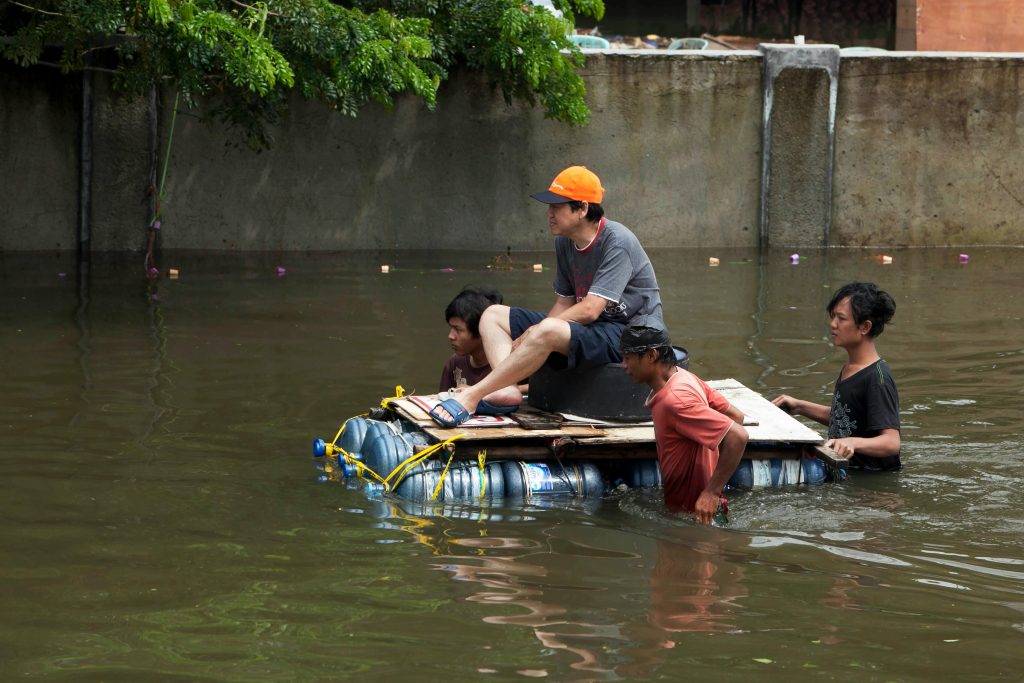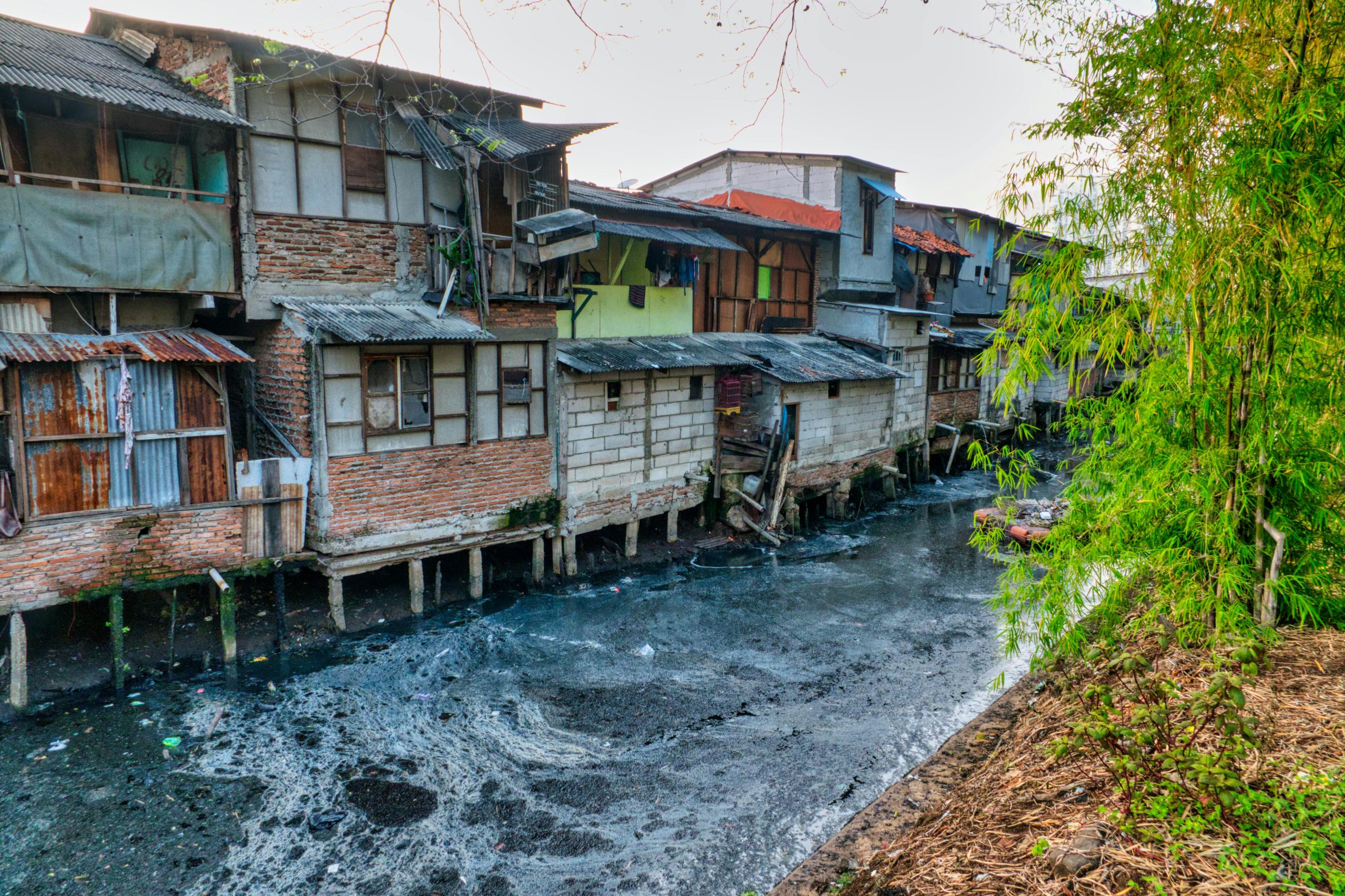Rising Sea Levels and the Sinking of Jakarta
Jakarta, the capital of Indonesia, faces a very serious environmental threat: gradually sinking. This phenomenon is not only caused by the global rise in sea levels but is worsened by the very rapid land subsidence occurring in the area. The combination of these two factors creates a multidimensional crisis threatening the city’s sustainability, economy, and the lives of millions of its residents. This article reviews the relationship between these two threats based on recent research findings.

( Image : Residents crossing the flood using a raft made of plastic bottles.)
Two Main Drivers of Jakarta’s Sinking Threat
The threat of Jakarta sinking is driven by two major forces. First, massive land subsidence. Research by Abidin et al. (2011) confirms that excessive groundwater exploitation to meet domestic and industrial needs is the primary cause of subsidence. Some areas in North Jakarta experience land subsidence of up to 20 cm per year, making it one of the fastest-sinking cities in the world.
Second, the threat from rising sea levels due to climate change. The danger is that these two phenomena do not act independently but reinforce each other. Mikhailov & Yushchenko (2022) and Muttaqin et al. (2021) explain that the impact of global sea level rise becomes much worse because Jakarta’s land surface is continually sinking. As a result, tidal flooding (flooding from sea water) occurs more frequently, spreads wider, and is deeper, as mapped in research by Muttaqin et al. (2021) and further analyzed by Sagala et al. (2023).
The combined impact does not stop at the surface. It warns that seawater intrusion into aquifers (groundwater sources) is also becoming increasingly severe, contaminating clean water sources and worsening the groundwater crisis. This situation creates a complex vicious cycle that demands a holistic approach, as discussed in the context of urban resilience by Kurnio et al. (2021).
Conclusion
Jakarta stands at a critical crossroads. The threat of sinking is real and supported by strong scientific data. Without quick and appropriate intervention, economic, social, and environmental losses will become increasingly uncontrollable. Short-term solutions such as the construction of a giant sea wall must be accompanied by fundamental actions, especially controlling groundwater exploitation and switching to sustainable surface water sources. Building urban resilience, as proposed by Kurnio et al. (2021), by integrating scientific knowledge and firm policies, is key to saving Jakarta from this existential crisis.
- Rainforest Action Network. (2020, November 24). Indonesia’s Rainforests: Biodiversity and Endangered Species – Rainforest Action Network. https://www.ran.org/indonesia_s_rainforests_biodiversity_and_endangered_species/
- Saturi, S. (2024, May 27). Pagar Listrik ancam gajah, Walhi: Pemicu alih Fungsi Hutan. Mongabay.co.id. https://mongabay.co.id/2024/05/27/pagar-listrik-ancam-gajah-walhi-pemicu-alih-fungsi-hutan/
- Muamar, A. (2025, September 11). Alih Fungsi Hutan Ancam Habitat dan Populasi Gajah Sumatera. Green Network Asia – Indonesia. https://greennetwork.id/gna-knowledge-hub/alih-fungsi-hutan-ancam-habitat-dan-populasi-gajah-sumatera/#:~:text=Populasi%20gajah%20sumatera%20diperkirakan%20masih%20sekitar%204.800%20individu%20pada%20tahun%201980%2Dan%2C%20lalu%20turun%20menjadi%202.400%2D2.800%20individu%20pada%20tahun%202007

